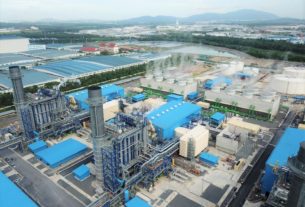 Thailand’s high speed train from Bangkok to Nakhon Ratchasima (Khorat) expected to be ready in 2027
Thailand’s high speed train from Bangkok to Nakhon Ratchasima (Khorat) expected to be ready in 2027
With six stations along the route, travel time from Bangkok to Nakhon Ratchasima in the north-eastern region will only be 90 minutes.
BANGKOK: Thailand’s high-speed train linking Bangkok and the north-eastern province of Nakhon Ratchasima is expected to be completed in 2027, with the link eventually providing a vital connection to China.
Government spokesman Anucha Burapachaisri said this was the first of the country’s two phased ambitious high-speed rail connectivity plans.
With six stations along the route, travel time from Bangkok to Nakhon Ratchasima in the north-eastern region will only be 90 minutes.
According to a Bangkok Post report, Anucha said the first-phase construction involves 15 contracts, with one being a systems contract and the others are civil construction contracts.
Only one of the 14 construction contracts have been completed so far – a 3.5 km section starting from Klang Dong to Pang Asok district in Nakhon Ratchasima.
This section will be a test case to see if local materials used for construction can handle the Chinese high-speed train, which can run up to 250 km per hour, he said.
Anucha said the route was a part of the Thai-Chinese high-speed train project which will stretch to the border province of Nong Khai and it will link to the high-speed train service that currently runs between Laos and China.
He added that the government was focused on investments in railroad developments across the country, both normal and high speed, as they played a crucial role in boosting the economy.
The Bangkok Post report said the Thai-Chinese high-speed train project started after the signing of an agreement on the project between the Thai and Chinese governments on May 12, 2016, in Beijing.
The first phase will cost Thailand almost 180 billion baht for the railway that will start from Bang Sue in Bangkok to Nakhon Ratchasima.
Six Chinese-made Fuxing Hao CR300 trains will run on this route, with each train consisting of eight carriages, with a total 594 seats — 96 first-class seats and 498 standard class seats.
The maximum travelling time is about 90 minutes, with trains running every one and a half hours. Fares will range from 105 baht to 535 baht.
The second phase of the Thai-Chinese high-speed train project will run 357 km from Nakhon Ratchasima to Nong Khai. It will allow a connection from travelling from Thailand to Laos and from there to China’s Kunming.
Having already passed an environmental impact assessment, the second phase is expected to be completed about three to four years after the first phase, with a completion date between 2029 and 2030.
Having a modern railway with good connectivity is seen as an important element in Thailand’s ambition to become an Indochina logistics hub. It is a priority in the government’s 20-year development strategic plan (2018–2037) and has so far seen several new rail transport development projects in the country.
Among them are electric train projects in Bangkok and the surrounding provinces, the first phase of the high-speed train project, and a high-speed train project linking Don Mueang, Suvarnabhumi and U-Tapao airports.
The Bangkok Post also reports that the State Railway of Thailand (SRT) aimed to implement a high-speed train project across the country, in the North, East, Northeast and South.
The northern high-speed train line will stretch from Bangkok to Chiang Mai, while the eastern line will connect Bangkok with Rayong. The north-eastern line will run from Bangkok to Nong Khai and the southern line from Bangkok to Padang Besar.
These projects will have a combined length of about 2,700 km. Of these, 1,207 km are considered urgent and will be built first. Another 702 km is in medium-term plans and the other 791 km will be for the long term.
“This high-speed train network will not only connect parts of Thailand but also serve as a rail link in Asean,” said the SRT.
“When all four high-speed train projects are fully built and connected, they will serve as a link to a huge network of rail transport for both passengers and cargo between China and Malaysia via Laos and Thailand,” said the SRT.
The eastern high-speed train route will also provide a connection to both Map Ta Phut port and Thailand’s three major airports.
Source: https://www.nst.com.my/world/region/2022/09/829864/thailand-high-speed-train-bangkok-nakhon-ratchasima-expected-be-ready


